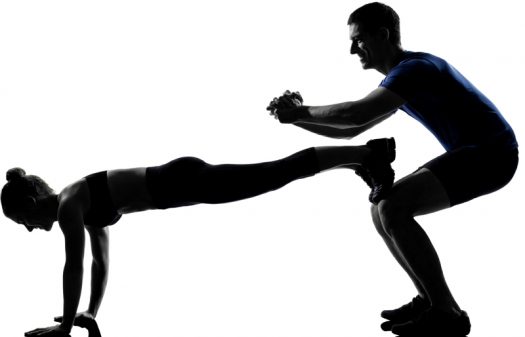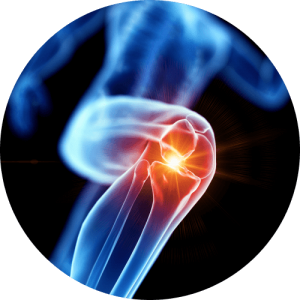
PHYSIO-PILATES CLASSES
We provide knee physiotherapy to treat a variety of knee injuries. These include sports injuries such as ligament sprains, traumatic injuries such as patella dislocation and over-use conditions such as patella-femoral pain (knee cap pain). Each knee injury requires an individual approach depending on the cause and type of injury.

Here are some common examples of knee injuries and conditions we see:
- Osteoarthritis
- Patello-Femoral Pain (Knee Cap Pain)
- ACL Ligament Tears and Sprains
- Post Surgery ACL Rehabilitation
- Meniscus Tears
- Quadricep and Hamstring Muscle Tears and Strains
- Fat Pad Inflammation

OUR TREATMENTS
What Does Knee Joint Physiotherapy Involve?
Your assessment will determine the type of knee injury you have. We use clinical tests to find out which structures in the knee are causing the pain and dysfunction. For example, there are tests for each ligament and this will tell us the degree of the injury and what type of treatment you need. The assessment will also determine how we need to start the rehabilitation.
Most knee injuries require an exercise program. Only fractures or severe muscle/ligament tears need to be immobilized for a time. Most other knee injuries will improve and resolve with gradual rehabilitation. We use classical Pilates equipment for knee injuries. The versatile equipment provides numerous exercise options depending on pain and disability.
Knee physiotherapy may include a combination of treatment techniques such as manual therapy, athletic taping, and sports massage. Exercises may include joint mobility, gradual strengthening, joint stability, and functional integration with the trunk, hip and foot. The ultimate goal to get you back to what you love doing.
Here are some examples of knee joint physiotherapy programs using the latest science and Pilates.
- Patellofemoral Pain or Runners Knee:
Patellofemoral knee pain or knee cap pain occurs in all types of sports. It can also occur in normal activities when certain conditions arise. Knee physiotherapy involves strengthening the knee, stretching the quadriceps, strengthening the hamstrings, and strengthening the hip and gluteal muscles.
In certain activities like running or tennis, we look at your hip and knee mechanics to see why the problem is occurring. Making adjustments in technique can also solve the problem.
- Osteoarthritis:
Osteoarthritis (OA) of the knee is the process where the cartilage breaks down due to an inflammatory process. It is not a process of wear and tear from everyday use or sports. The research shows that OA is triggered biologically in some people. The worst thing you can do is not do any exercise because of OA. The research also supports therapeutic exercise in many different forms to improve cartilage health and decrease the pain and inflammation in the knee.
The Pilates equipment is ideal for graduated knee physiotherapy. The varying levels in resistance and positioning allows us to avoid causing a flare-up and build strength gradually. The Pilates reformer is like a leg press, but the innovative design targets different muscles. The reformer can be used lying on the back, side-lying and standing.
- Quadricep and Hamstring Strains:
Regular muscle strain can occur in muscles that have been over-loaded. Most grade 1-2 strains will heal with graded exercise. The torn fibres need to repair and build muscle tissue again. Once we have identified which muscle is strained, we give you specific exercises on the Pilates equipment. The graded tension in the springs allows the weakened tissue to heal without re-injury.
- Meniscus and Cartilage Injuries:
The meniscus is comprised of two C-shaped pieces of rubbery cartilage in each knee. They can become torn with certain injuries or as a result of the inflammatory process of knee osteoarthritis. Not all meniscus injuries need surgery. In fact, studies have shown that patients long term outcome is better with exercise rehabilitation than meniscus surgery. Some traumatic meniscus tears will need surgery.
Knee physiotherapy may include manual therapy and exercise to restore normal mechanics at the knee joint, followed by gradual strengthening as pain allows. We then progress the exercises to sport-specific exercises. We can still do this on the classic Pilates equipment. Knee exercises can help to reduce pain and help the meniscus to heal.
FREQUENTLY ASKED QUESTIONS
Can I do exercise with knee pain?
Yes, you can. In many situations, introducing light stress into a painful joint can decrease pain. It’s all about getting the right dosage of exercise at the right time in the rehabilitation process.
Also, recent science is now showing that exercise appears to prevent arthritic changes by decreasing the number of inflammatory chemicals found inside your knees! Exercise has been proven to be the most effective treatment for early and moderate osteoarthritis of our joints.
Will exercise or return to activity make my knee pain worse?
No, not necessarily. Each knee and person are different. Some patients will need a more gradual approach. In most cases, exercise and gradual re-loading into the knee joint will help to decrease the inflammatory process. Exercise has been proven to decrease the concentration of proteins and compounds in our knees that cause damage to the cartilage.
